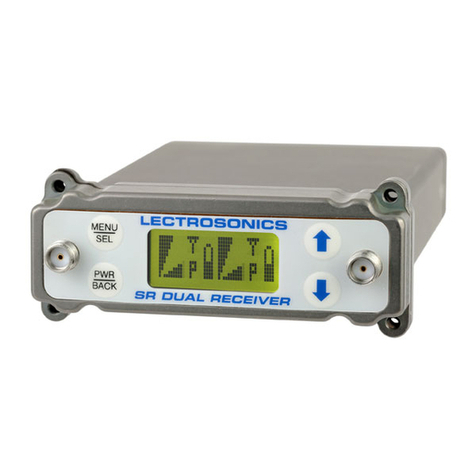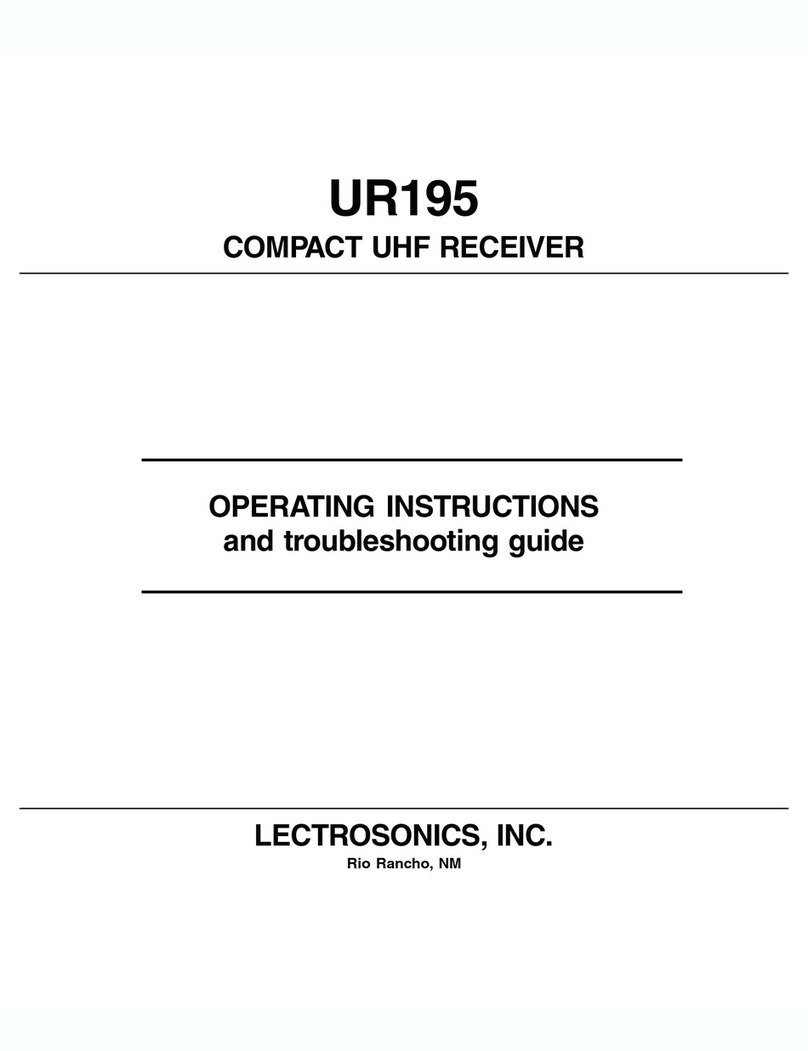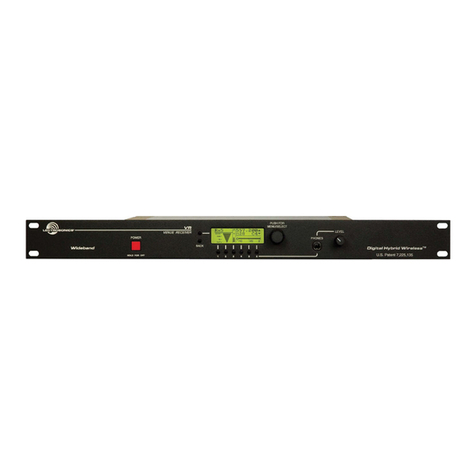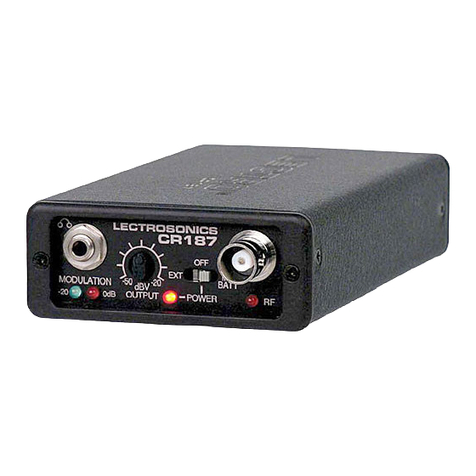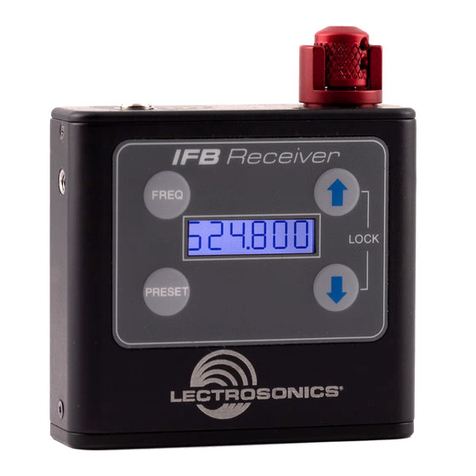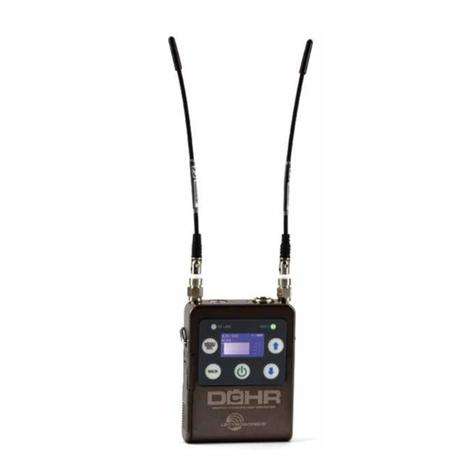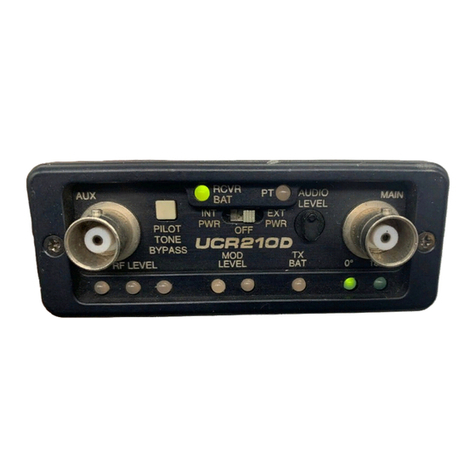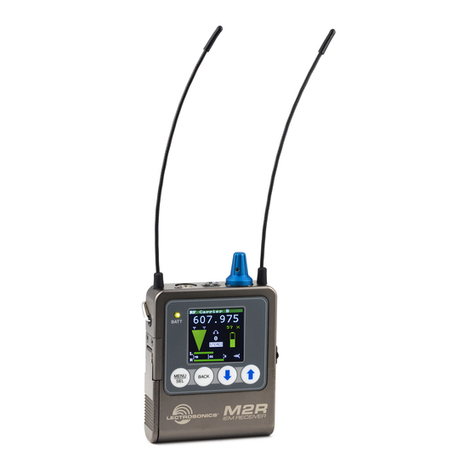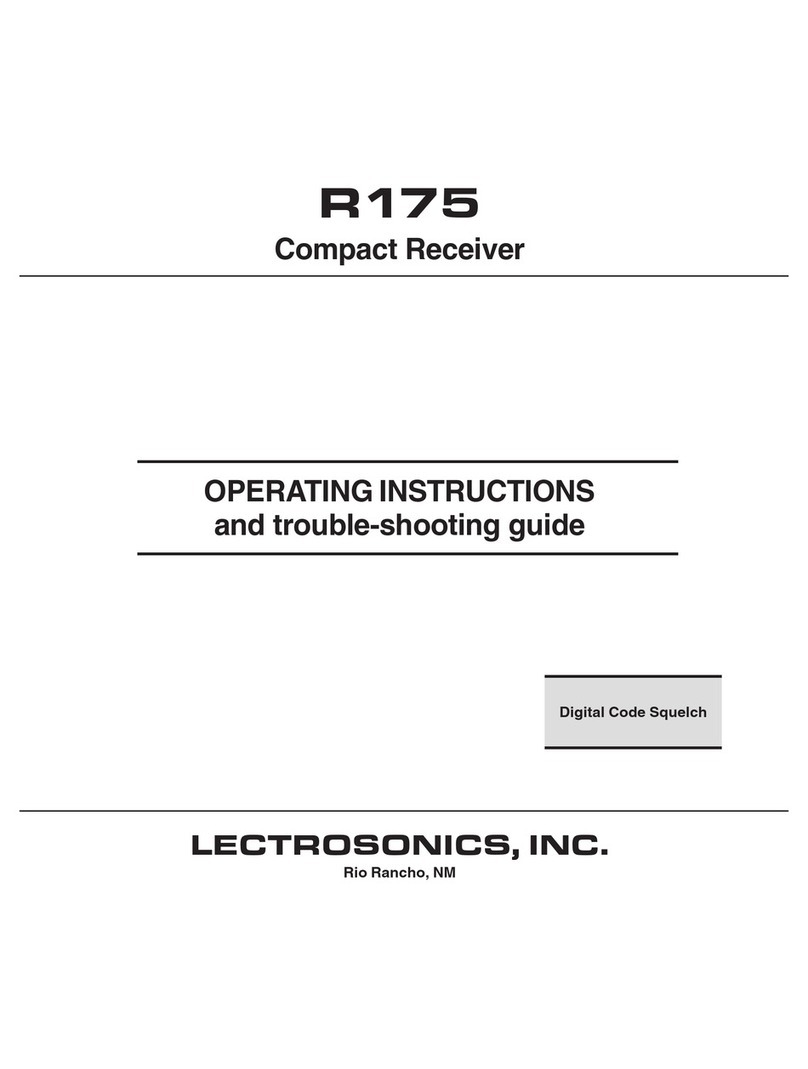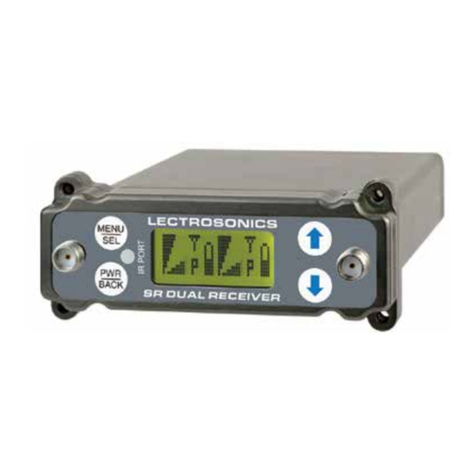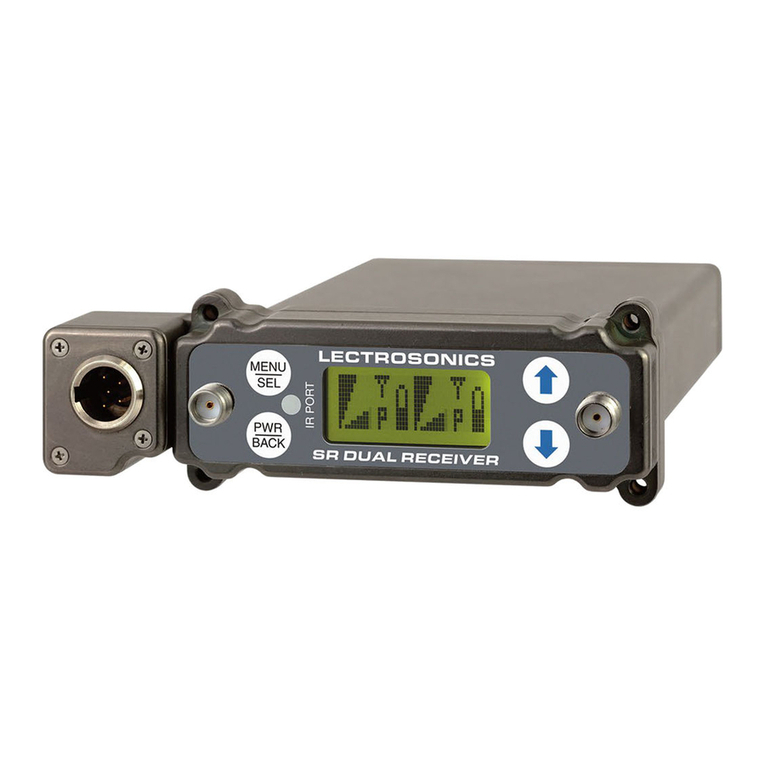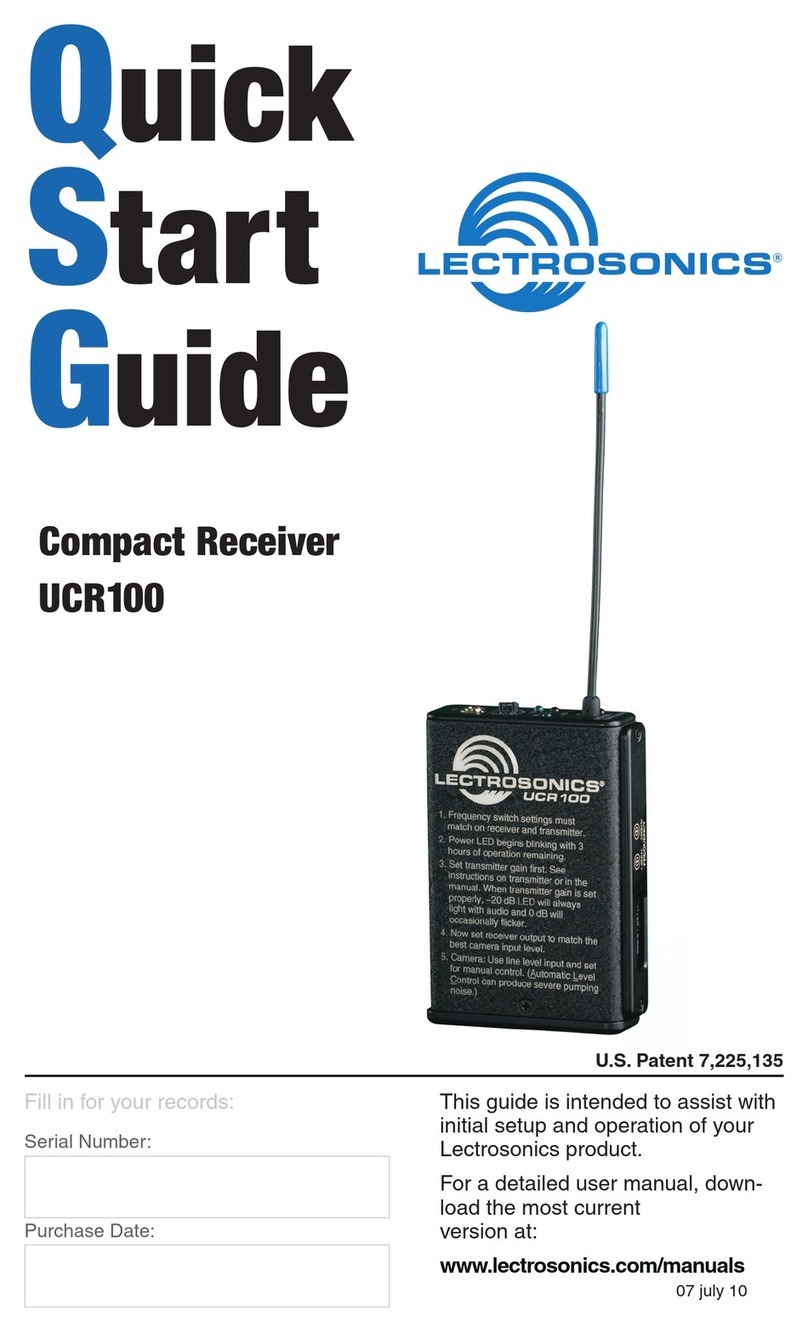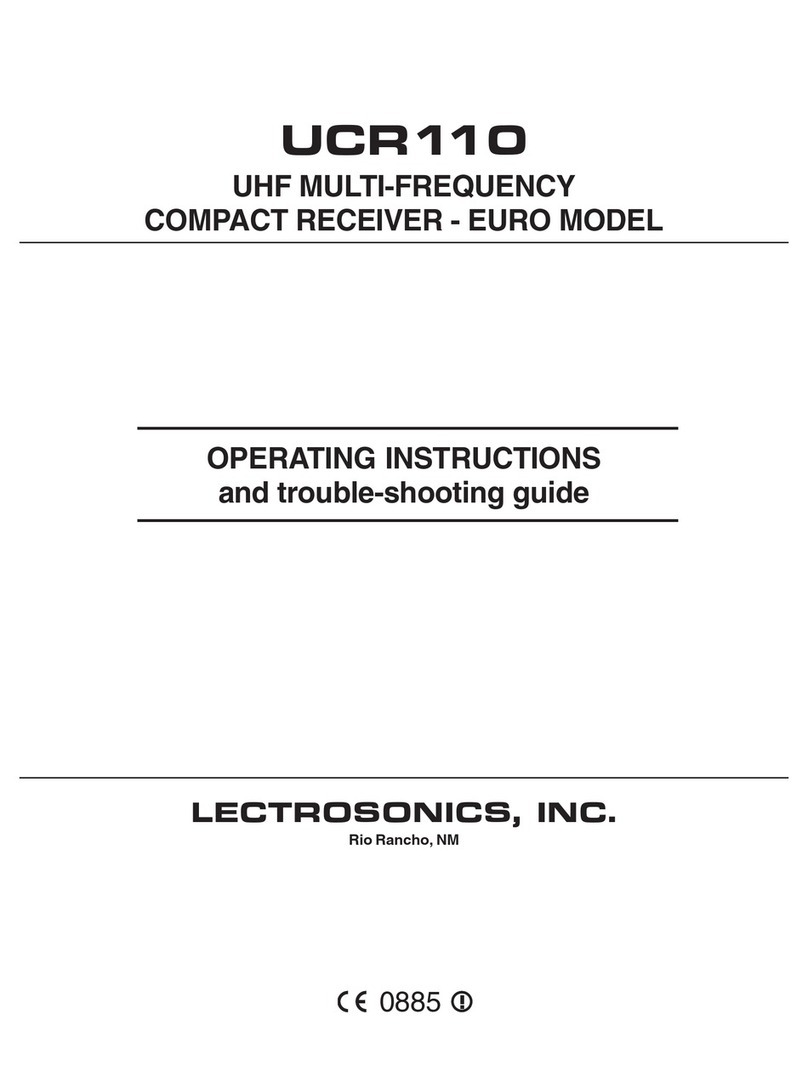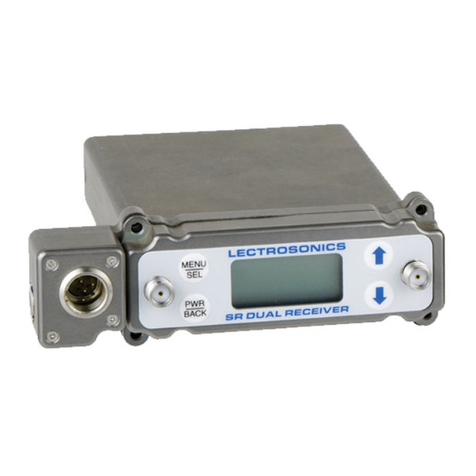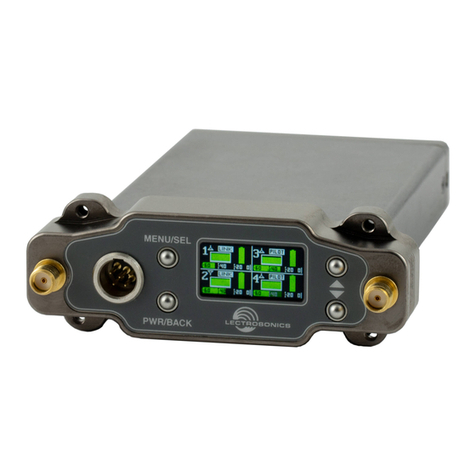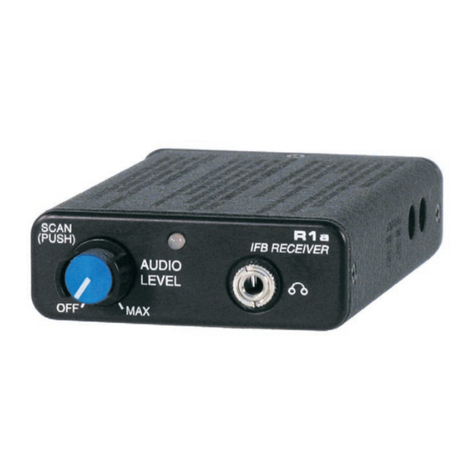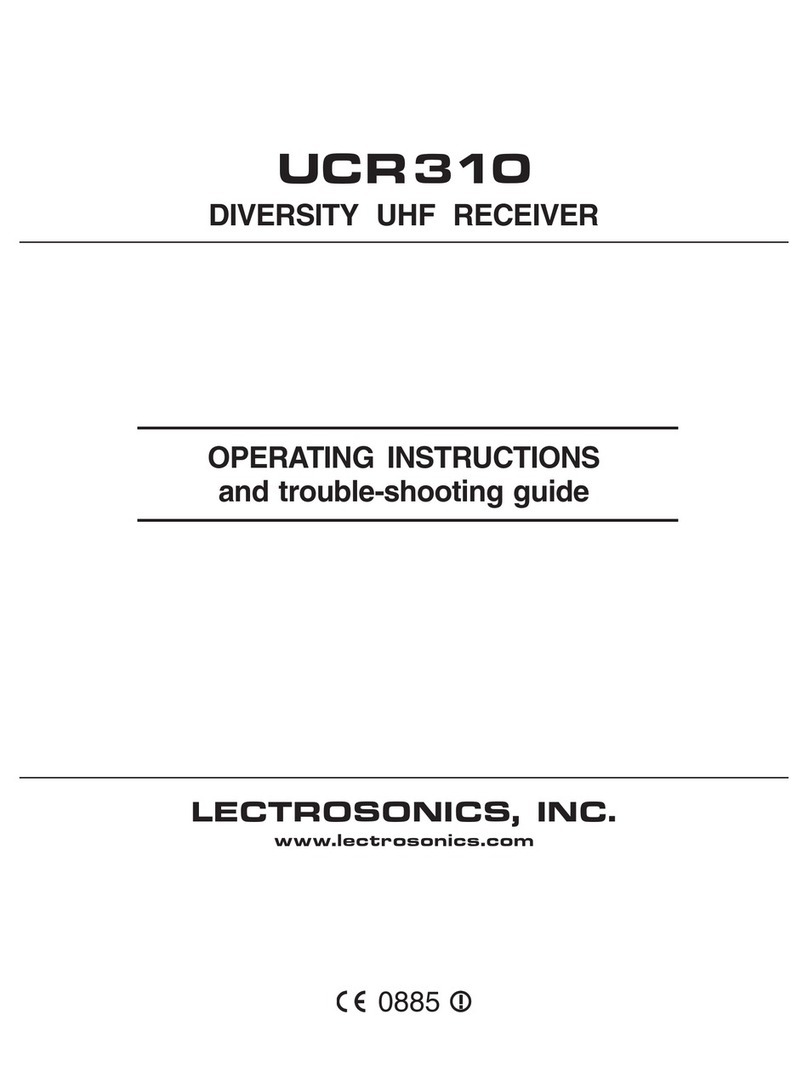6
RECEIVER OPERATING INSTRUCTIONS
Before operating a receiver, one or more IFB T1 transmitters must be placed in XMIT mode, with each transmitter set to
the desired frequency and connected to a proper antenna, audio source, and power source. The transmitter frequency
block must be the same as the receiver frequency block as marked on each unit.
RECEIVER NORMAL OPERATION (already programmed)
1. Set the Frequency of the receiver to match the frequency of the transmitter by using the two HEX rotary switches
located on the side of the receiver under the sliding door. The 1.6M switch is for “coarse”adjustment (1.6 MHz per
click) and the 100k switch is for “fine”adjustment (0.1 MHz per click). Setting both to zero (00) is the low fre-
quency end of the block and setting both to F (FF) is the highest frequency end of the block.
2. Plug an earphone or headset into the 3.5mm jack. Be sure the unit has a good battery.
3. Rotate the knob clockwise to switch the power ON (Do NOT hold the knob in while switching power ON). The LED
will illuminate. Rotate the knob to set the desired audio level.
4. If channel frequencies have been stored in the memory, change channels by pressing the knob briefly and release.
The LED will blink the next channel number (frequency) and the receiver will resume operation on that channel.
If no channel frequencies have been stored when pressing the knob to change channels, the LED will flash from
green to red to yellow to green, indicating no stored channels and the unit will resume operation on the channel set
by the switches.
5. Whenever power is switched ON, the unit operation defaults to the channel frequency set by the switches.
PROGRAMMING - ADD A NEW FREQUENCYTO THE NEXT OPEN CHANNEL
1. Position the receiver at a location within 20 to 100 feet of the transmitter or transmitters.
2. With the power ON, depress the knob until the LED starts rapidly blinking, then release the knob.
3. The unit goes into program mode and does a scan/search. Previously programmed frequencies will be automati-
cally skipped. When the unit stops on a new frequency audio from the transmitter will be heard in the earphone
and the LED will stop blinking rapidly and will change to a slow blink mode.
The unit is now waiting for an operator decision. You must now decide to either SKIP or STORE the frequency
(step 4 or 5 below.) Switching the power to OFF without storing will delete the frequency.
4. To SKIP the frequency, depress the knob briefly and the scan/search will resume.
5. To STORE the frequency into a channel memory, depress the knob until the LED blinks the new channel number,
then release the knob. The frequency is now stored in an open channel.
6. The unit will continue scan/search for other frequencies. To store more frequencies repeat steps 4 and 5 above.
Up to 5 frequencies can be stored in memory channels.
7. When all desired frequencies are stored switch the power to OFF for a few moments, then switch back to ON. The
unit will default to the channel number set by the switches and resume normal operating mode.
8. The first scan is made at low sensitivity and searches for only high level transmitter signals to avoid intermods. If
the receiver does not stop on any frequency in the first scan, that means an IFB transmitter was not detected. In
this condition the LED will change from a fast blink to a slow blink indicating the end of the scan. The complete
scan should take 15 to 40 seconds.
9. If the receiver still does not stop on any frequency, check that the transmitter is ON. Also, if a frequency is not
received or received but distorted, some other signal may be interfering on that frequency. Change the transmitter
to another frequency and try again.
A second scan at high sensitivity is initiated by depressing the knob briefly at the end of the first scan to search
for low level transmitter signals. When the scan stops and the transmitter audio is heard, either SKIP or STORE
the frequency (step 4 or 5 above).
10. Switching the POWER to OFF during any mode simply terminates that mode and returns the unit to normal
operating mode when the power is switched back to ON.
